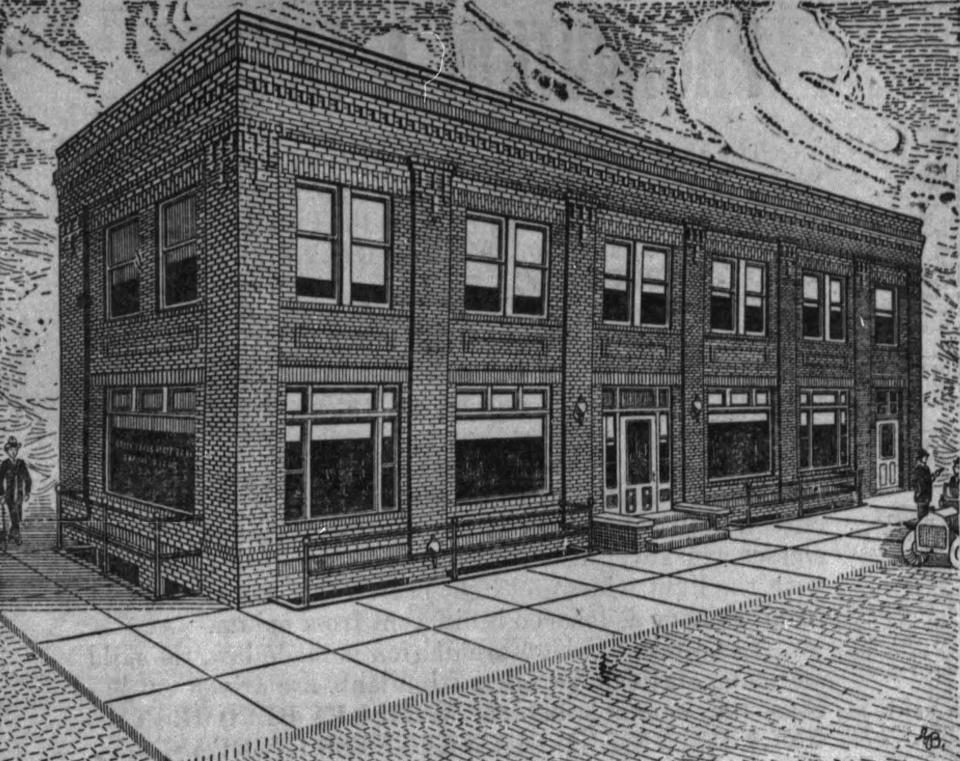Why Raymick Inn was once known as having the longest bar in town: Looking back
The somewhat triangular building at the northwest corner of 8th and Weber has always fascinated me. It reminded me of the famous Flatiron Building in New York City, though I’ve never been.
When it first caught my eye, it was home to the Stockman’s Bar. Kind of a dive, but still exuded a dark allure. I always figured that, owing to its triangular nature, it was built to accept goods from the train tracks that passed by its west side, but this is not so.

The building was constructed for Stock Yards State Bank after powerful early community leaders Melvin Grigsby, Peter Aggergaard, Sioux Grigsby, and O. W. Mikkelson determined the east side of the city was booming enough to necessitate a bank.
The fruit of their development was the $25,000 building constructed to house the bank. Decorated in mahogany and marble, Stock Yards State Bank was equipped with the latest in burglar-proof banking and safety deposit vaults.
On the second floor were offices used for private meetings with clients taking advantage of all the products the bank had to offer, including insurance and securities. The basement would contain a barber shop and all of the building’s mechanics. The hope was to cater to the east side and those frequenting the nearby stockyards and railways. The bank finally opened, two months later than expected, on Jan. 15, 1917. A month later, Melvin Grigsby died while attempting to recover from a bout of pneumonia that plagued him for quite a while.
In January 1918, the Argus Leader established an east side office in the building, another sign the east side of the city was a booming community, but separate from the Sioux Falls on the west side of the tracks. In March, Stock Yards State Bank moved its offices to 8th and Phillips. It is unclear why. Perhaps the expected volume of business didn’t materialize these few blocks east of the center of town. A month later the name was changed to Commercial and Savings Bank.
In August 1919, United Motor Equipment Company, a wholesale parts supplier for automobiles, took up residence in the former bank building. A month later, the building was expanded to the north, though little attention was paid to the architecture or building materials of the original structure. In January 1921, United Motor Equipment filed for bankruptcy, citing $73,000 in assets, but $76,000 in liabilities. The company’s stock was sold off at low prices in an attempt to even the scales.
Marvel Electrolyte Service, a Minneapolis-based company that refurbished automobile batteries, opened in the space in June 1922, but closed down a few months later.
More: Ma and Pa drug stores struggled in Sioux Falls. Mills Pharmacy was no different: Looking Back
Tri-State Wholesale Grocery Company established its offices in the building in August 1924. The company continued on until 1927, when it was replaced by another battery company, Grant Storage. Sioux Grigsby owned the building the entire time. In 1934, the Stock Yards Bank building made a transition from an industrial space to a service and entertainment venue.
Clair H. “Mick” Roth and Ray Madel leased the building and opened a bar. They called it the Raymik Inn, naming the place for themselves. The 21st Amendment had been ratified by the states on Dec. 5, 1933, officially ending prohibition, and as a result, bars started opening across the nation. The Raymik Inn sold soft drinks to begin with, sort of a bring-your-own-booze situation, until an alcohol permit was obtained the following June. Once the booze began to flow, and consequently, money, Mick and Ray were able to make some renovations to the space and finally have a grand opening. In May 1935, it was announced tthe new Raymik had the longest bar in town, and one and all were invited to check it out. Around this time, Ray took his leave and began working for Morrell.
In 1944, Mick Roth sold the business to Paul Miller Jr., former proprietor of the Delmont Bar on 10th Street. Paul ran the business until late 1950. When he sold it, it became Stockman’s Bar, which, despite multiple changes of ownership, it remained until it closed in 1998. Stockman’s is a story for another day.
This article originally appeared on Sioux Falls Argus Leader: Why Raymick Inn was once known as having the longest bar in town: Looking back

